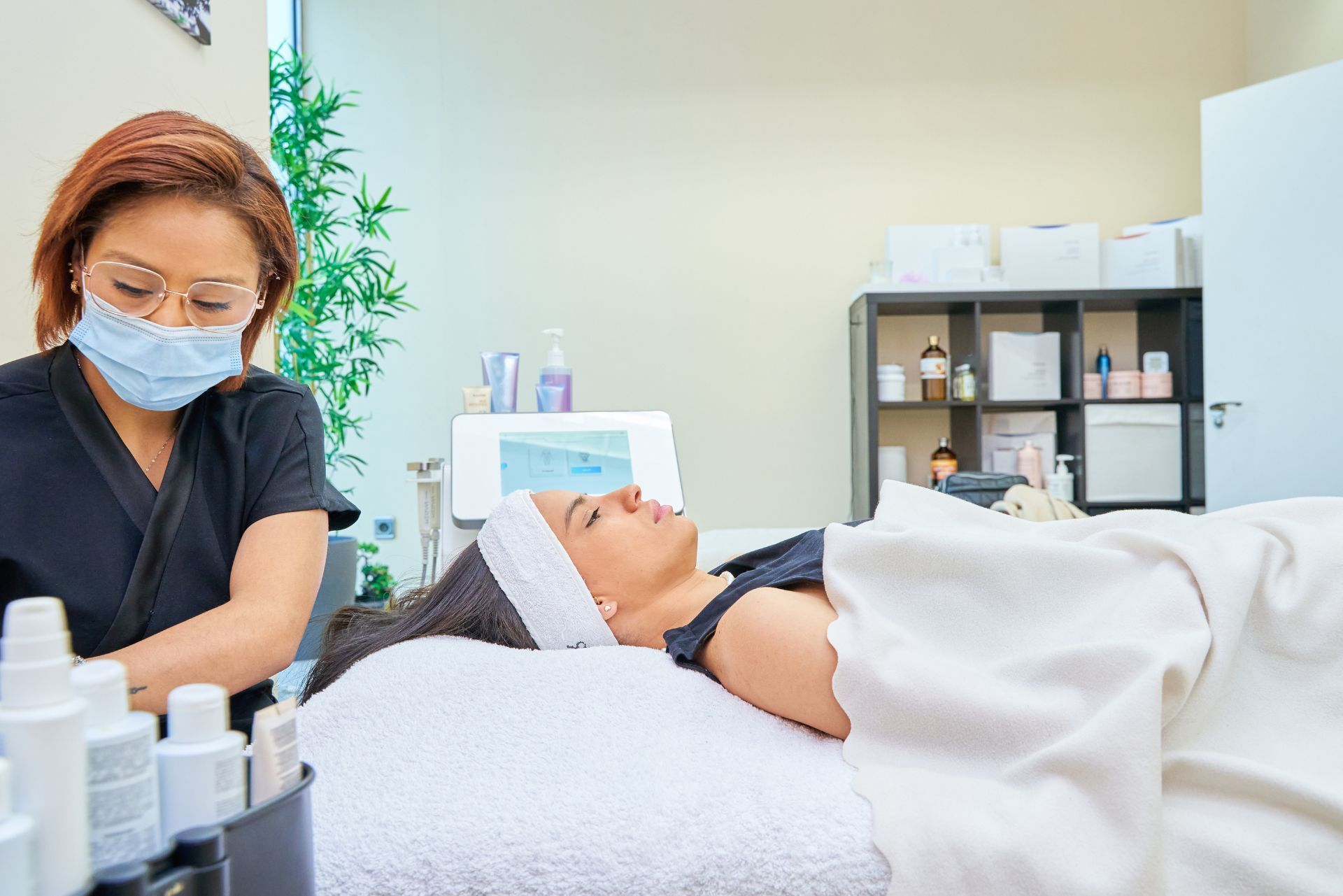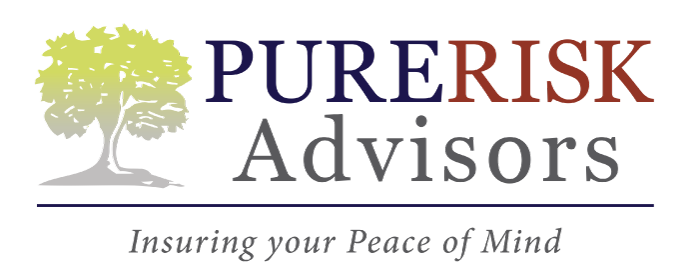Colorado Day Spa Insurance
9:00am - 5:00pm Mon-Fri
We'll Reply in 15min*
Top 3 Recommended Policies
By: John Jacquat
Business Insurance Advisor
303-843-1001
Index
Contact Us
Phone
Location
The spa industry has experienced significant growth over recent years, both globally and within the United States. In 2022 alone, the global spa industry was valued at approximately $130 billion, reflecting a robust market with increasing consumer demand for wellness and relaxation services. Colorado, with its thriving tourism and wellness culture, is no exception to this trend. For day spa owners and operators in Colorado, understanding the nuances of day spa insurance is essential to protect their business, clients, and employees from potential risks.
Whether you’re just starting a day spa or looking to update your existing coverage, this comprehensive guide will walk you through everything you need to know about Colorado day spa insurance. From the types of coverage available to the unique challenges faced in this industry, this article aims to equip you with the knowledge to make informed decisions.
Before diving into the specifics, it’s important to note that the spa industry’s growth comes with increased scrutiny and the need for proper risk management. According to
ZipDo Education Reports 2025, the average annual growth rate of the global spa industry is estimated at about 5% over the next five years, indicating a steady expansion that brings both opportunity and responsibility.
Understanding the Importance of Day Spa Insurance in Colorado
Day spas offer a variety of services ranging from massages and facials to advanced skin treatments and wellness therapies. With such services, the potential for accidents, injuries, or even claims related to malpractice is an ongoing concern. Insurance is not just a legal formality; it’s a critical safeguard for your business’s longevity.
Colorado’s spa industry is part of a larger U.S. market that generated approximately $20 billion in revenue in 2022, with day spas accounting for 78.3% of the total 21,510 spa establishments nationwide, according to Market.us. This dominance of day spas highlights the competitive nature of the industry and the importance of maintaining a trustworthy, well-protected business.
Insurance helps mitigate financial risks associated with property damage, liability claims, employee injuries, and other unforeseen events. For example, complications can arise from treatments, and as noted by Burns & Wilcox, “we can see some nasty claims in this space regarding complications... Oftentimes, complications do occur with these kinds of facilities.” This underscores the critical need for comprehensive insurance coverage paired with proper medical oversight.
Moreover, the unique landscape of Colorado, with its diverse clientele and varying altitude-related health considerations, adds another layer of complexity to the spa business. Day spas must be equipped to handle a wide range of customer needs, from those seeking relaxation to individuals looking for therapeutic treatments. This variability necessitates not only skilled practitioners but also robust insurance policies that cover a broad spectrum of services, including specialized treatments that may carry higher risks. Additionally, as the wellness trend continues to grow, consumers are increasingly aware of their rights and the standards of care they should expect, making it imperative for spa owners to protect themselves against potential legal disputes.
Furthermore, the rise of social media and online reviews has transformed how businesses are perceived and how they operate. A single negative review can have lasting repercussions on a spa's reputation, making it essential to not only provide exceptional service but also to ensure that your business is protected against claims that may arise from dissatisfied clients. Insurance can provide peace of mind, allowing spa owners to focus on delivering high-quality services rather than worrying about the financial implications of potential lawsuits. This proactive approach to risk management not only enhances the spa's credibility but also fosters a culture of safety and professionalism that clients will appreciate.

Types of Insurance Coverage Essential for Colorado Day Spas
Choosing the right insurance policies is vital to cover the diverse risks associated with running a day spa. Here are the primary types of insurance that spa owners in Colorado should consider:
General Liability Insurance
This is the cornerstone of any day spa’s insurance portfolio. It covers claims related to bodily injury, property damage, and personal injury that occur on your premises or as a result of your business operations. For example, if a client slips and falls or experiences an allergic reaction to a product used during a treatment, general liability insurance helps cover legal fees and settlements. Additionally, this insurance can also protect against claims arising from advertising injuries, such as defamation or copyright infringement, which can be particularly relevant for spas that engage in marketing their services through various channels.
Professional Liability Insurance
Also known as malpractice insurance, this coverage protects against claims of negligence or errors in the professional services provided. Given the nature of spa treatments, which may involve medical-grade procedures or skin care treatments, this insurance is crucial. As experts from Burns & Wilcox emphasize, “all of it just underscores the need for proper medical oversight in these facilities.” Moreover, professional liability insurance can also cover the costs associated with defending against claims that may arise from the use of specialized equipment or products that could potentially cause harm if not used correctly, thereby providing an extra layer of security for spa owners.
Property Insurance
Property insurance protects the physical assets of your spa, including the building (if owned), equipment, furniture, and inventory. This coverage is essential in the event of fire, theft, vandalism, or natural disasters, which are risks that cannot be ignored in Colorado’s diverse climate. Furthermore, many spas invest heavily in high-end equipment and luxurious furnishings to create a serene environment for their clients. Therefore, having adequate property insurance not only safeguards these investments but also ensures that the spa can quickly recover and continue operations after a loss, maintaining the trust and loyalty of its clientele.
Workers’ Compensation Insurance
If you employ staff, Colorado law requires workers’ compensation insurance to cover medical expenses and lost wages for employees injured on the job. This coverage is vital for maintaining a safe workplace and complying with state regulations. Additionally, providing workers’ compensation insurance can enhance employee morale, as staff members feel more secure knowing that they are protected in case of an accident. This can lead to a more motivated workforce, which is essential in the service-oriented spa industry where customer satisfaction is paramount.
Business Interruption Insurance
This type of insurance covers lost income if your day spa is forced to close temporarily due to a covered event like a fire or natural disaster. Given the importance of continuous operations in a competitive market, this coverage can be a financial lifesaver. It also often includes coverage for ongoing expenses, such as rent and utilities, which means that even during a period of closure, the spa can maintain its financial obligations. This is particularly important in the spa industry, where a temporary shutdown can lead to significant revenue loss and disrupt client relationships, making it crucial to have a plan in place to mitigate these risks.
Challenges and Risks Unique to Colorado Day Spas
Operating a day spa in Colorado comes with unique challenges that influence insurance needs. The state’s booming tourism industry means spas often serve a transient clientele, increasing the risk of liability claims. Additionally, Colorado’s diverse weather patterns—ranging from heavy snowfalls to wildfires—pose property risks that must be accounted for in insurance policies.
Colorado’s Division of Insurance recently reported a 20% increase in insurance claims recovered between July 2023 and June 2024, totaling $26.4 million, highlighting the rising costs and claims activity in the state’s insurance market (VailDaily.com).
Moreover, the spa industry’s rapid growth and the introduction of more advanced treatments have led to increased scrutiny regarding patient safety. Complications from treatments, especially in med-spa settings, have prompted calls for enhanced medical oversight and risk management. These factors make it imperative for spa owners to work closely with insurance professionals who understand the nuances of the industry.
In addition to the liability and property risks, Colorado day spas must navigate the complexities of regulatory compliance. The state has specific licensing requirements for various spa services, including massage therapy and esthetics, which can vary by municipality. This patchwork of regulations can create confusion and increase the risk of non-compliance, resulting in fines or even the suspension of business operations. Spa owners must stay informed about these regulations and ensure that their staff is properly trained and certified, adding another layer of responsibility to their operations.
Furthermore, the competitive landscape in Colorado's spa industry is intensifying, with new establishments frequently entering the market. This competition not only pressures pricing but also necessitates that spas differentiate themselves through unique offerings and exceptional customer service. As consumer preferences evolve, day spas must innovate and adapt their services to meet the demands of health-conscious clients seeking holistic and personalized experiences. This drive for differentiation can lead to increased operational costs, further complicating the financial landscape for spa owners.

How Spa Revenues and Industry Trends Impact Insurance Costs
The financial health of your spa can directly influence your insurance premiums. According to Market.us, spa revenues averaged $2,076 per available room, accounting for 2.3% of total revenue in hotel operations. While this statistic primarily relates to hotel spas, it reflects the broader economic dynamics within the spa sector.
In Colorado, as day spas continue to capture a significant share of the wellness market, insurance providers factor in revenue size, service offerings, and client volume when calculating premiums. Spas offering higher-risk treatments or those with larger client bases may face higher insurance costs but benefit from more comprehensive coverage.
Industry growth projections also play a role. With the global spa industry expected to grow at about 5% annually over the next five years, insurance companies anticipate increased claims activity, which can influence policy pricing and terms. Staying informed about these trends helps spa owners budget appropriately and negotiate better coverage.
Moreover, the type of services offered can significantly impact risk assessments. For instance, spas that provide advanced skincare treatments, such as chemical peels or laser therapies, may be viewed as higher risk due to the potential for adverse reactions or complications. Consequently, these establishments might need to invest in specialized liability coverage that addresses the unique challenges posed by such services. Additionally, spas that incorporate wellness programs, such as yoga or fitness classes, may find their insurance needs evolving as they attract a more diverse clientele seeking holistic health solutions.
Another important factor is the increasing emphasis on sustainability and eco-friendly practices within the spa industry. As more spas adopt green initiatives, such as using organic products or energy-efficient technologies, they may also see a shift in their insurance premiums. Insurers are beginning to recognize the reduced risk associated with environmentally responsible operations, potentially leading to lower costs for those who prioritize sustainability. This trend not only benefits the spa financially but also appeals to a growing segment of eco-conscious consumers, further enhancing the spa's market position.
Tips for Securing the Best Day Spa Insurance in Colorado
Securing the right insurance coverage requires more than just purchasing a policy. It involves strategic planning and ongoing risk management. Here are some tips to help Colorado day spa owners get the best insurance protection:
1. Work with Experienced Insurance Agents
Choose agents or brokers who specialize in spa or wellness industry insurance. Their expertise ensures you get coverage tailored to your specific risks and regulatory requirements. An experienced agent can also help you navigate the complexities of different policies, ensuring that you understand the nuances of coverage limits, exclusions, and endorsements that may apply to your unique business model.
2. Conduct Regular Risk Assessments
Identify potential hazards in your spa operations and implement safety protocols to minimize risks. Insurance providers often offer better rates to businesses with strong risk management practices. Regular risk assessments can also help you pinpoint areas for improvement, such as updating equipment or enhancing employee training programs, which can further reduce liability and improve overall safety standards.
3. Review and Update Policies Annually
As your spa grows or adds new services, your insurance needs may change. Regularly reviewing your coverage ensures you’re neither underinsured nor paying for unnecessary protections. Additionally, consider documenting any changes in your operations, such as new treatments or products, as this information can be crucial when discussing your policy with your insurance agent.
4. Ensure Compliance with Colorado Regulations
Stay informed about state laws related to spa operations, employee safety, and insurance requirements. Compliance reduces the likelihood of costly fines and claims. Engaging with local industry associations or attending workshops can be beneficial for staying up-to-date on regulatory changes and best practices, allowing you to maintain a competitive edge in the market.
5. Consider Bundling Policies
Many insurers offer package policies that combine general liability, property, and professional liability insurance at discounted rates, providing comprehensive coverage at a better price. Bundling can also simplify your insurance management, as you will have a single point of contact for all your needs, making it easier to keep track of renewals and changes in coverage.
Additionally, when bundling, inquire about any additional perks or services that may be included, such as risk management consultations or access to exclusive training programs. These added benefits can enhance your spa's operational safety and help you foster a more secure environment for both clients and staff.
Conclusion: Protecting Your Colorado Day Spa for the Future
The Colorado day spa industry is thriving, buoyed by growing consumer interest in wellness and self-care. However, with growth comes increased responsibility to manage risks effectively. Comprehensive day spa insurance is not just a protective measure; it’s a business imperative that safeguards your investment, reputation, and clients.
By understanding the types of coverage available, recognizing the unique challenges in Colorado, and staying abreast of industry trends, spa owners can make informed decisions that ensure long-term success. Remember that insurance is a dynamic aspect of your business strategy—regular reviews and updates are key to maintaining optimal protection.
For those seeking to learn more about industry statistics and trends, resources like
ZipDo Education Reports 2025 and
Market.us provide valuable insights that can inform your business and insurance planning.


